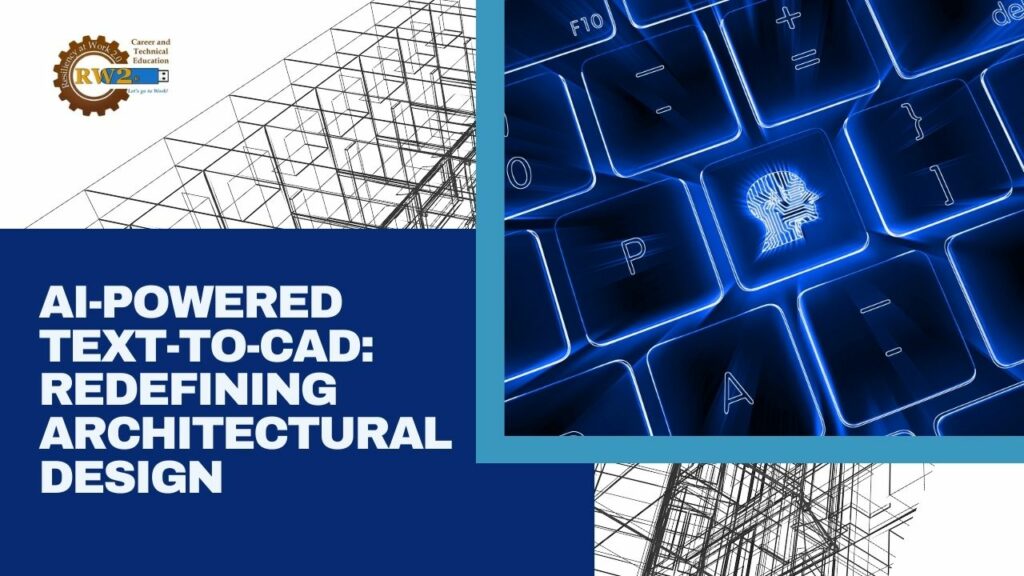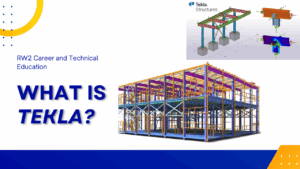
The world of architecture is constantly evolving, with new designs and innovations emerging every day.
However, tedious and time-consuming tasks like dealing with the cascading effects of parameter changes and manual fine-tuning have long plagued the design process itself. This is where AI-powered text-to-CAD technology comes in, completely transforming traditional design workflows.
By harnessing the power of artificial intelligence, this technology eliminates bottlenecks and streamlines the entire design process. With the use of computer aided design software and cad drawing design, architects and designers can now push the boundaries of efficiency and creativity, resulting in truly innovative and groundbreaking designs.
In this blog post, we will dive into the details of how AI-enhanced CAD solutions are revolutionizing design workflows and paving the way for architectural innovation.
The Basics of AI-Enhanced CAD Solutions
AI-enhanced CAD solutions integrate artificial intelligence with traditional computer-aided design software to revolutionize the architectural design process. At its core, this innovative approach leverages AI to interpret and transform textual descriptions into detailed CAD drawings.
Unlike conventional methods, which rely heavily on manual input and adjustment, AI-powered text-to-CAD systems can understand natural language instructions, making it possible for designers to articulate their ideas verbally or through written text and then see those concepts materialize into precise digital models almost instantaneously.
This technology employs machine learning algorithms to continuously improve its understanding of design intentions, thereby increasing its accuracy and efficiency over time. It can recognize patterns, learn from previous designs, and even suggest optimizations, streamlining the design workflow significantly.
By integrating AI into CAD software, the technology not only speeds up the initial creation of designs but also facilitates easier modifications, adapting to changes with far less effort from the designer.
This marriage of AI and CAD is setting a new standard for how architects and designers approach their projects, making the once cumbersome process of turning an idea into a tangible plan more fluid, intuitive, and boundlessly creative.
Eliminating Design Bottlenecks
One of the most significant advantages of AI-powered text-to-CAD technology is its ability to eliminate traditional design bottlenecks.
These bottlenecks often arise from the labor-intensive nature of conventional CAD drawing and design, where manual input and adjustments can significantly slow down the process. By employing artificial intelligence, text-to-CAD systems can rapidly interpret design intentions from text descriptions, circumventing the need for tedious manual drafting.
This shift not only speeds up the initial creation of architectural plans but also facilitates a more dynamic iteration process. Designers can now make changes on-the-fly, with the AI quickly recalculating and updating designs in response to new instructions.
This level of adaptability and efficiency dramatically reduces the time spent on revising and fine-tuning designs, allowing architects to focus more on innovation and less on overcoming procedural hurdles. By streamlining these previously time-consuming steps, AI-enhanced CAD solutions are clearing the path for faster, more efficient design cycles, thus enabling architects and designers to bring their visions to life with unprecedented speed and precision.
Decreasing Manual Fine-Tuning
In traditional architectural design workflows, a substantial amount of time is dedicated to manual fine-tuning. Every line, curve, and dimension often requires meticulous adjustment to meet precise specifications. This labor-intensive phase not only drains resources but also stifles creative momentum.
However, with the advent of AI-powered text-to-CAD technology, the landscape is shifting dramatically. Through the utilization of advanced algorithms, these systems can accurately interpret design intents from textual inputs, automating the refinement process that previously demanded hours of manual effort.
This means that architects and designers can allocate more time to exploring innovative ideas rather than getting bogged down in the minutiae of adjustments.
Moreover, as these AI systems learn from each interaction, they become increasingly proficient in anticipating the needs of the designer, further reducing the necessity for manual fine-tuning. This evolution signifies a pivotal turn in architectural design, where precision and creativity coalesce, unfettered by the tedious demands of traditional CAD drafting.
Minimizing the Domino Effect of Parameter Changes
In traditional CAD workflows, a single alteration in design parameters can set off a chain reaction, necessitating numerous subsequent adjustments throughout the project. This domino effect significantly increases the risk of errors and delays, as each change requires manual reevaluation and correction.
AI-powered text-to-CAD technology dramatically minimizes this issue by using sophisticated algorithms to understand and anticipate the impact of parameter changes across the entire design. When a designer adjusts a dimension or modifies an element, the AI instantly recalculates and adjusts related components, maintaining design integrity without the painstaking manual oversight.
This capability not only streamlines the revision process but also ensures that alterations are integrated seamlessly, preserving the original design intent. By intelligently managing the relationships between various design elements, AI-enhanced CAD systems prevent minor modifications from escalating into major setbacks, thereby maintaining a smooth and efficient workflow.
This advancement marks a significant leap forward in architectural design, enabling professionals to explore and implement changes with confidence, knowing that the integrity of their work will be preserved through each iteration.
Accelerating Feedback Loops
The advent of AI-powered text-to-CAD technology has had a profound impact on feedback loops within the architectural design process. Traditional feedback mechanisms often involved lengthy discussions, manual redrafting, and time-consuming revisions, making each iteration a slow and arduous process.
However, with text-to-CAD systems, feedback can be incorporated almost instantly. As stakeholders provide input, whether it be minor adjustments or major design overhauls, AI interprets these suggestions in real-time, applying changes directly to the CAD model.
This immediacy not only expedites the review cycle but also encourages a more dynamic exchange of ideas among team members and clients. Architects and designers can quickly iterate on feedback, test different scenarios, and refine designs with unparalleled speed, fostering a more collaborative and innovative design environment.
This efficiency in processing and applying feedback transforms the traditionally slow and siloed design feedback loop into a fast-paced, interactive dialogue, greatly enhancing the overall quality and creativity of architectural projects.
Pushing the Boundaries of Efficiency and Creativity
The integration of AI-powered text-to-CAD technology into architectural design represents a monumental shift towards efficiency and creativity. The seamless conversion of textual descriptions into intricate CAD models made possible by this combination of innovation gives architects an unmatched opportunity to experiment with new forms of expression and design free from the mechanical limitations of conventional CAD methods.
This leap forward not only enhances productivity but also empowers designers to experiment with complex, innovative ideas that were previously deemed too resource-intensive to pursue, marking a new era of architectural innovation that balances artistic vision with technical feasibility.
Within the curriculum of RW2, a significant emphasis is placed on mastering Computer-Aided Design and Drafting (CADD), specifically through learning how to utilize Autodesk AutoCAD software program.
This foundational skill set enables students to grasp the commands and procedures necessary for creating detailed two-dimensional (2D) drawings and designs.
RW2 also offers Revit for Building Information Modeling (BIM), using Autodesk Revit software as a tool for executing 3D digital design processes.
This advanced training prepares students to create comprehensive 3D drawings and designs, facilitating a deeper understanding of building models and the interconnectedness of various design elements.
This educational approach not only hones technical acumen but also nurtures a forward-thinking mindset, ready to push the boundaries of what is possible in the realm of architectural design.To truly appreciate the power of Computer-Aided Drafting and Design (CADD) or Revit for BIM, RW2 offers a 2-week no-obligation trial. This trial serves as a hands-on, minds-on exploration of these high-demand skill sets, so seize the opportunity today. Pre-register now! or Schedule a class visit! ( https://calendly.com/rw2 )




Nice blog here Also your site loads up fast What host are you using Can I get your affiliate link to your host I wish my web site loaded up as quickly as yours lol
startup talky Nice post. I learn something totally new and challenging on websites
Techno rozen Great information shared.. really enjoyed reading this post thank you author for sharing this post .. appreciated
Wow wonderful blog layout How long have you been blogging for you make blogging look easy The overall look of your site is great as well as the content